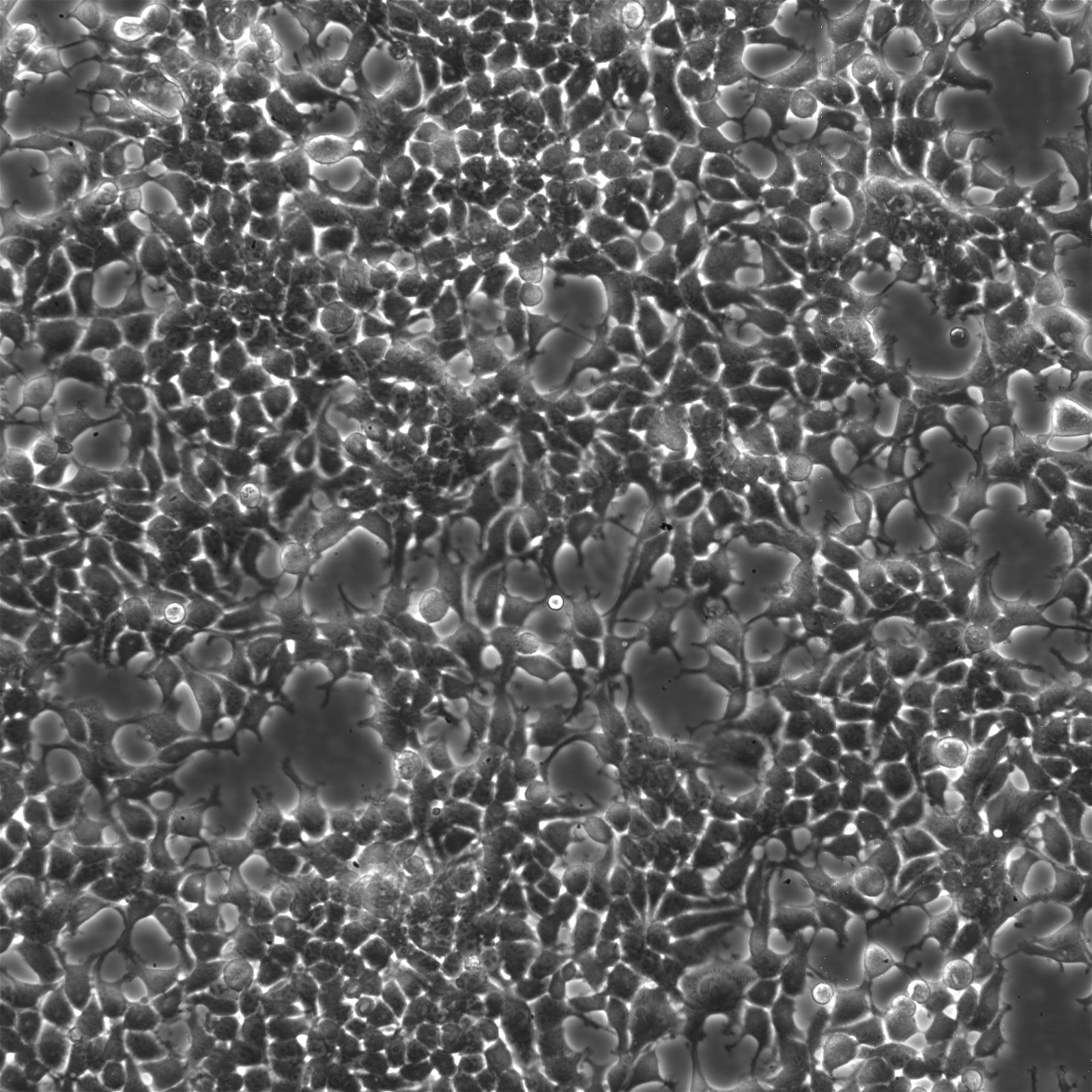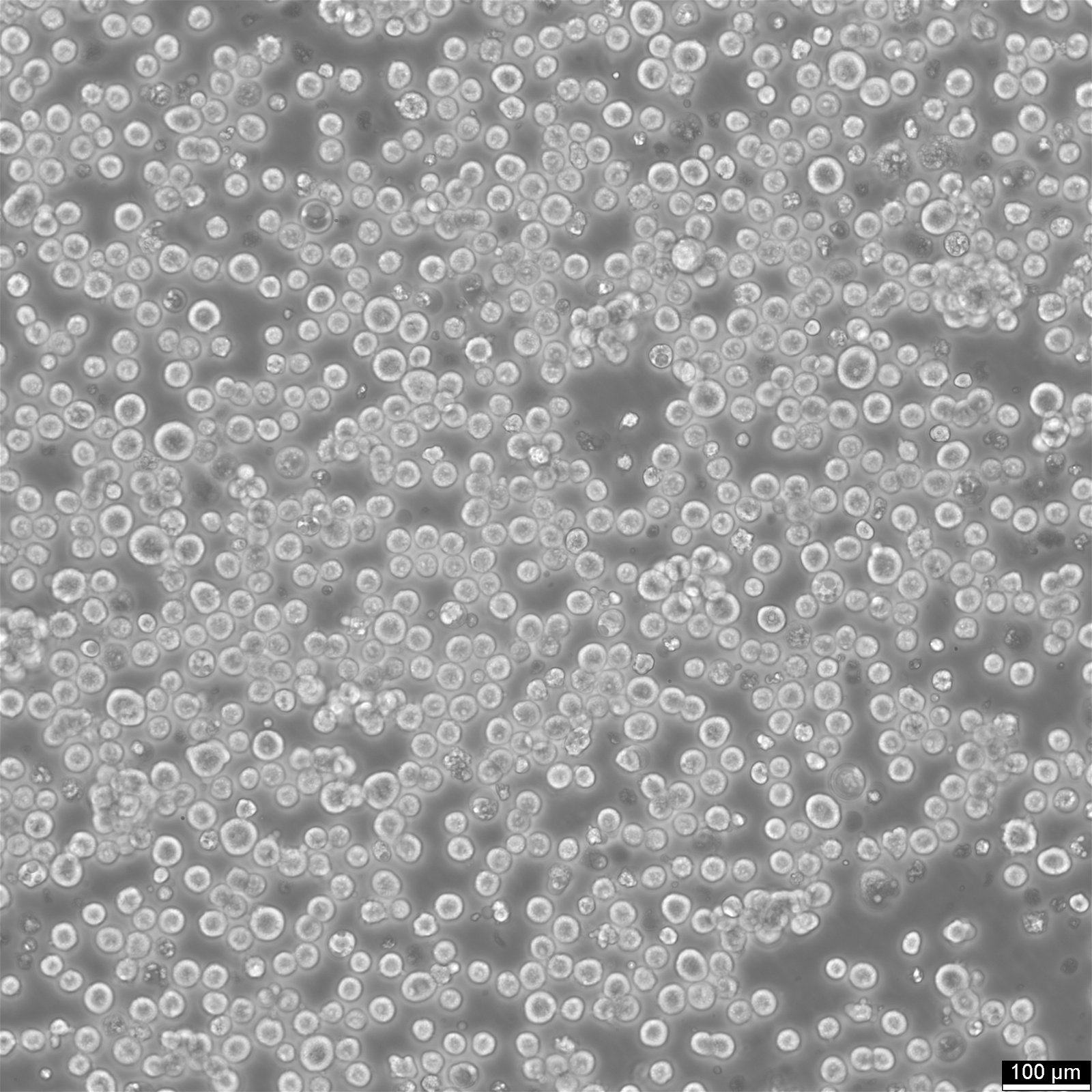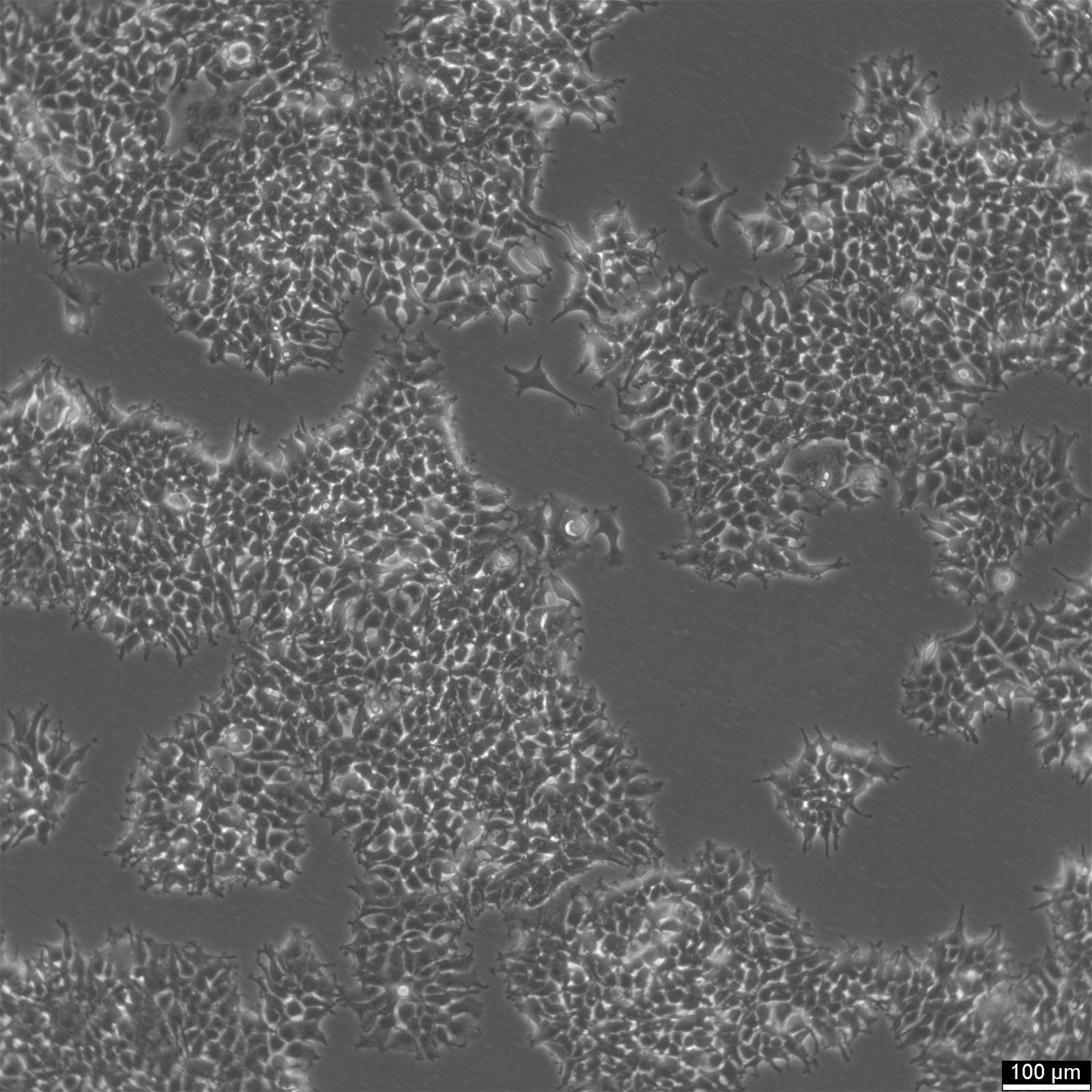HEK293 Cells: A Cornerstone in Modern Cellular Research and Biotechnology
Human embryonic kidney 293 (HEK293) cells are a human embryonic kidney cell line that has gained widespread popularity in the scientific community because of their versatility and usefulness in a wide range of research applications. The cell line was established in the early 1970s and has since been used for vaccine development, cancer research, drug testing, and signal transduction. This blog post will explore all aspects of the HEK293 cell line, including its origin, culture information, advantages and drawbacks, applications, and resources.
HEK293 Cells: General Information and Origin
What are HEK293 cells?
HEK293 cells are a human embryonic kidney cell line derived from the kidney tissue of an electively terminated human embryo of unknown parenthood. The cells were established by a Dutch biologist named Alex Van der Eb in the early 1970s. They were later immortalized through a transformation with a truncated adenovirus 5 by researcher Frank Graham.
Initially, the cells seemed challenging to transform. However, after many continuous efforts, cell growth happened from an isolated single transformed clone [1]. The cell's transfection with adenovirus 5 led to the inclusion of the E1A and E1B genes in the cell's genome, which prevents cell death and allows for abundant protein production. Before immortalization, the fetal kidney cells were not adequately characterized, so their exact cell type is unknown.
Embryonic kidneys are composed of endothelial, epithelial, and fibroblast cells, so HEK 293 cells likely belong to these cells. However, the mRNA and gene products suggest that they are neuronal cells. It is possible that the addition of Ad5 altered the cellular phenotype and gene expression. Fun fact: The "293" in HEK293 refers to the 293rd experiment performed by Graham.
Fun fact: The "293" in HEK293 refers to the 293rd experiment performed by Graham.
Characteristics of HEK293 cells
- Morphology
- Cell size
- Genome and ploidy (chromosome number)
HEK293 cells have a shape that resembles epithelial cells. Embryonic kidneys are composed mainly of fibroblast, endothelial, and epithelial cells. Thus 293 cells resemble one of these cell types in shape.
The size of HEK 293 cells falls between 11 to 15 µm, which can be affected by the culture conditions. In culture, the cells may appear flattened when grown on a surface or rounded in suspension. HEK293 cells are hypotriploid, and about 30% of HEK293 cells have a modal ploidy of 64 chromosomes, but some cells have even more chromosomes. The cells also have three copies of the X chromosome and a 4-kilobase pair fragment of adenovirus 5 integrated into chromosome 19.
Comparison of HEK293 Vs. HEK293T cell line
Many derivatives have been derived from the parental HEK 293 cells, such as the common 293 cell derivatives HEK293T and HEK293F cells. HEK293T cells are one of the most widely used derivatives and were created by incorporating a temperature-sensitive SV40 T-antigen mutant into the original HEK 293 cell genome. Expression of the T-antigen allows for the replication of plasmids with an SV40 origin of replication when transfected into 293-T cells, leading to increased production of recombinant proteins [2]. For more information on HEK cell line derivatives, including their development and characteristics, refer to this review article.
Basics of HEK293 Cell Culturing: A Step-by-Step Guide
|
Conditions |
Information |
|
Population Doubling Time |
The doubling time of the HEK293 cell line ranges from 24 to 45 hours, with an average of 30 hours. |
|
Adherent or Suspension Cultures |
HEK293 cells can be grown in both adherent and suspension forms. Adherent cells grow as monolayers, while suspension cultures grow as spheroids. |
|
Seeding Density |
Split cells at 80-90% confluency during the growth phase. Detach cells using Accutase and seed at a density of 1 to 4 x 104 cells/cm2. A confluent layer will form in 4 days at a seeding density of 1 x 104 cells/cm2. |
|
Growth Medium |
Grow in Eagle's Minimum Essential Medium (EMEM) with 2 mM L-glutamine and 10% fetal bovine serum (FBS). Change the medium two times a week. |
|
Growth Conditions (Temperature, CO2) |
Keep in a humidified incubator at 37 °C with a 5% CO2 supply for optimum growth. |
|
Storage |
Store in the vapor or liquid phase of liquid nitrogen for long-term preservation. Avoid storing at -80 °C freezer as it may affect cell viability. |
|
Freezing Process and Medium |
Use a slow freezing method for best preservation. Freeze in CM-1 or CM-ACF freeze medium available from CLS. |
|
Thawing Process |
Thaw frozen cells in a 37 °C water bath for 1-2 minutes until a small ice clump remains. Transfer the cell suspension to a centrifuge tube and add pre-warmed growth medium and centrifuge to eliminate freezing media components. Resuspend the cell pellet in fresh medium and culture at optimal conditions. |
|
Biosafety Level |
HEK293 cells require biosafety level 1 handling. |
Purchase HEK293 cells for your Discoveries
For your groundbreaking research, consider our HEK293 cells, known for their versatility in gene expression studies and vaccine development, and derivatives such as HEK293T, HEK293 suspension-adapted, HEK293T/17, AAV-293 and 2V6.11. Discover more and enhance your experiments by exploring our product range here.
The HEK293 Cell Line in Research & Industry
The applications of HEK293 cells are diverse and significant. They are frequently used as a system for the expression and production of recombinant proteins. Due to their human origin, proteins produced in these cells are more likely to be similar to their natural human counterparts in terms of structure and function, which is crucial for therapeutic applications.
Moreover, HEK293 cells are often employed in the study of gene function and regulation, as they readily take up foreign DNA, making them an excellent model for genetic manipulation. These cells also play a critical role in the production of adenoviral vectors, which are used in gene therapy and vaccine development, including the rapid generation of vaccines for COVID-19.
Vaccine and Protein production: HEK 293 cells are suitable for large-scale protein and therapeutic vaccine manufacture. The cell line is further used to generate viral vectors such as adeno associated and adenoviral vectors. Recently, HEK293 cells have been used for producing a crucial recombinant protein, erythropoietin (EPO).
Drug testing: HEK293 cells are frequently used for testing the toxicity of drugs and natural products.
Cancer research: 293 cells are tumorigenic, and crucial gene expression changes can aggravate tumorigenesis in this cell line. Therefore, the 293 cell line is frequently used in cancer studies for understanding the underlying molecular mechanisms and drug development.
Transfection studies: Transfection is the process of introducing nucleic acids into cells, and HEK293 cells are particularly amenable to this process. More on this topic is explained below.
The Role of HEK293 in Vaccine and Protein Production
In vaccine production, HEK293 cells have been instrumental in the development of adenovirus-based vaccines. Their ability to grow in suspension cultures allows for scalable processes, pivotal in meeting global vaccine demands. Additionally, their human origin provides an advantage over other cell lines, as they can perform human-like post-translational modifications, ensuring the biological efficacy of the produced vaccines.
The versatility of HEK293 cells extends to the production of complex proteins, including monoclonal antibodies and biosimilars, which are used in the treatment of cancer, autoimmune diseases, and other conditions. Their capacity to accurately fold and modify proteins makes them a preferred choice in the recombinant protein production industry.
Why Are HEK293 Cells Used for Transfection?
Transfection is the process of introducing nucleic acids into cells, and HEK293 cells are particularly amenable to this process. There are several reasons why HEK293 cells are favored for transfection:
- High Transfection Efficiency: HEK293 cells have a high uptake rate for foreign DNA, which can be attributed to their ability to express certain viral genes that facilitate the entry of DNA into the cell.
- Robust Growth: These cells grow rapidly and are relatively easy to maintain, which is beneficial for experiments that require quick and reliable results.
- Adaptability: HEK293 cells can be grown in a variety of conditions, including adherent or suspension cultures, which makes them suitable for large-scale protein production.
- Human Cell Line: As a human cell line, they provide more relevant biological context for human biology, which is particularly important in therapeutic research where the response in human cells is predictive of in vivo outcomes.
- Versatility: They are able to produce proteins with complex post-translational modifications, a feature that is essential for the functionality of many proteins, especially therapeutic antibodies.
HEK293 Subculture Protocol
Required Reagents
- 1X Phosphate-Buffered Saline (PBS)
- 10% Trypsin-PBS
- Dulbecco's Modified Eagle's Medium (DMEM)
Procedure
Cell Preparation
- Check the HEK cells under a microscope to ensure they are about 90% confluent.
- Clean the workstation using aseptic techniques and sterilize the fume hood with UV light.
- Wipe the workspace with 70% ethanol.
- Pre-warm all reagents in a 37°C water bath.
Calculating Split Fraction and Seed Amount
- Determine the split fraction, typically between 1:5 to 1:20.
- Calculate the volume for pipetting using the formula: Vp = (S)(Vd).
Media Volumes and Splitting Protocols
For cell culture, different vessels require specific media volumes and have unique growth areas. For example, a 6-well plate has a growth area of 4.67 cm^2 per well and needs about 2.5 mL of media, whereas a 100 mm plate has a 55 cm^2 growth area, requiring 10 mL of media. The process of splitting cells involves removing old media, washing with PBS, incubating with Accutase, neutralizing with DMEM, centrifuging, resuspending in new media, and then seeding onto a new plate. For detailed steps and ratios for other vessels like 100 cm^2 flasks and 150 mm plates, please refer to the original source.
Benefits and Limitations of the HEK293 Cell Line
HEK293 cells have distinctive features that make them attractive for research and protein production.
Advantages
- High Recombinant Protein Production: HEK293 cells can produce large amounts of recombinant proteins with complex post-translational modifications.
- Flexible Transfection: These cells are highly efficient for transfection studies and can be efficiently transfected using various physical and chemical methods.
- Gene Expression Analysis: Due to their ability to be efficiently transfected, HEK293 cells can be used for both transient and stable gene expression analysis.
- Reproducibility of Results: HEK293 cells offer consistent, reliable, reproducible results, making them a popular choice for research laboratories.
Drawbacks of the HEK293 Cell Line
- Bacterial contamination: The risk of bacterial contamination is a common challenge in culturing cell lines, including HEK293 cells. Bacterial infections can alter the pH of the culture media, cause turbidity, and affect cell shape, culture period, and gene expression. To prevent contamination, aseptic cell culturing conditions must be strictly maintained.
- Viral infection: HEK293 cells, like other human cell lines, are susceptible to human viral diseases. These infections can only be detected through PCR testing and are not easily visible.
- Culture period: Although the HEK293 cell line is immortalized, prolonged culture periods can gradually degrade cell health and affect gene expression, reproducibility, and cell growth. To maintain a healthy culture, it's recommended to keep the number of passages below 20.
HEK293 Resource Overview: Protocols, Videos, and More
HEK293 cells are a widely used and well-studied cell line, leading to various resources for their maintenance and cultivation. Here, we highlight some resources for learning about HEK293 cell culture protocols:
- HEK Cell Splitting and Maintenance: An educational website with plenty of information about HEK293 cells. It describes the subculturing and seeding protocol for this cell line.
- HEK293 Cells: This website link will provide all the published information regarding cell culturing conditions, growth media, and splitting protocols.
Videos related to HEK293 cell line
Many educational videos are readily available on subculturing, cell plating, and transfection protocols of HEK293 cells.
- Transient expression using 293 cells: This educational video describes the basic concept of transient expression analysis in HEK293 cells with illustrations.
- Splitting HEK293 cells: This video shows the complete subculturing protocol for the HEK293 cell line.
Unleash the potential of your research with HEK293 cells! We've got you covered with all the information you need to get started, so why wait? Make the smart choice and order from us today to experience the benefits of using this incredible cell line in your study!
Frequently Asked Questions About HEK293 Cells
HEK293 cells are a subject of widespread use in scientific research, which naturally brings up numerous questions about their nature, origin, and characteristics. Below, we explore some of these common inquiries.
Reference list
- Lin, Y.-C., et al., Genome dynamics of the human embryonic kidney 293 lineage in response to cell biology manipulations. Nature communications, 2014. 5(1): p. 4767.
- Tan, E., et al., HEK293 cell line as a platform to produce recombinant proteins and viral vectors. Frontiers in bioengineering and biotechnology, 2021: p. 1288.
- Pulix, M., et al., Molecular characterization of HEK293 cells as emerging versatile cell factories. Current Opinion in Biotechnology, 2021. 71: p. 18-24.
- Alvim, R.G., I. Itabaiana Jr, and L.R. Castilho, Zika virus-like particles (VLPs): Stable cell lines and continuous perfusion processes as a new potential vaccine manufacturing platform. Vaccine, 2019. 37(47): p. 6970-6977.
- Schwarz, H., et al., Small-scale bioreactor supports high density HEK293 cell perfusion culture for the production of recombinant Erythropoietin. Journal of biotechnology, 2020. 309: p. 44-52.
- Liu, X., et al., Nanotoxic effects of silver nanoparticles on normal HEK-293 cells in comparison to cancerous HeLa cell line. International journal of nanomedicine, 2021. 16: p. 753.
- Patra, B., et al., Piper betle: augmented synthesis of gold nanoparticles and its in-vitro cytotoxicity assessment on HeLa and HEK293 cells. Journal of Cluster Science, 2020. 31: p. 133-145.
- Stepanenko, A. and V. Dmitrenko, HEK293 in cell biology and cancer research: phenotype, karyotype, tumorigenicity, and stress-induced genome-phenotype evolution. Gene, 2015. 569(2): p. 182-190.







